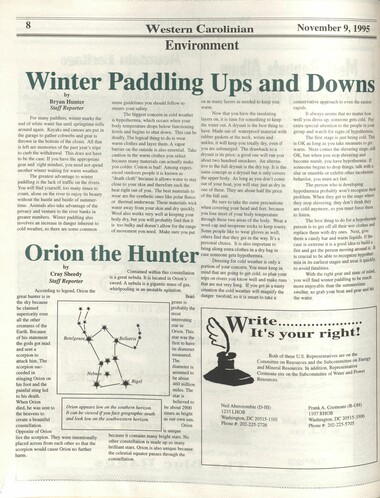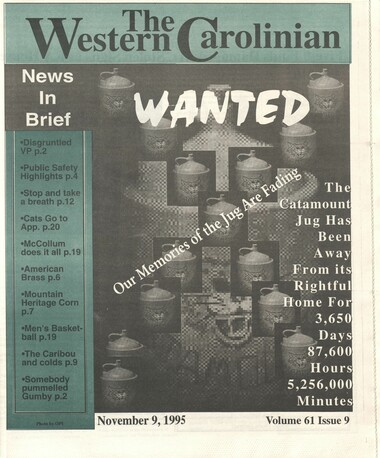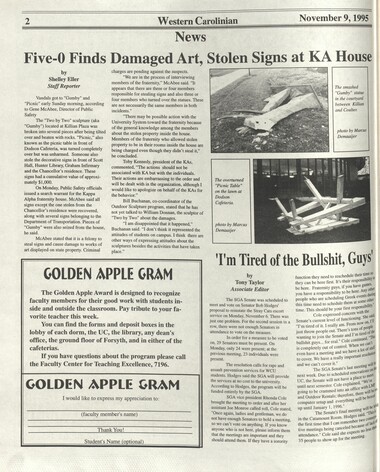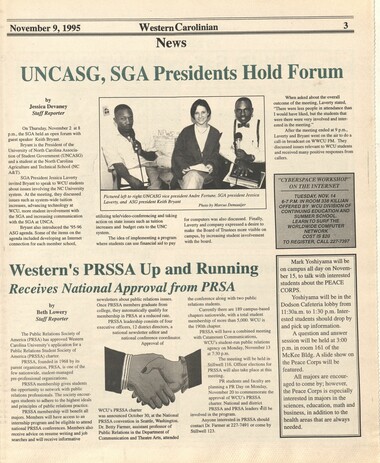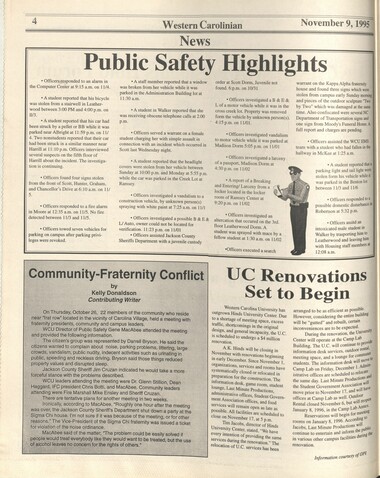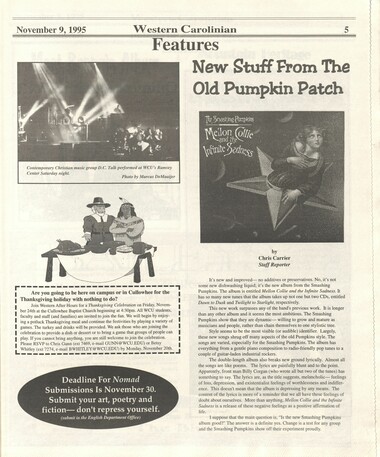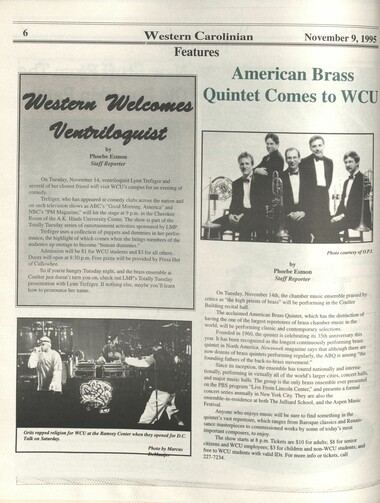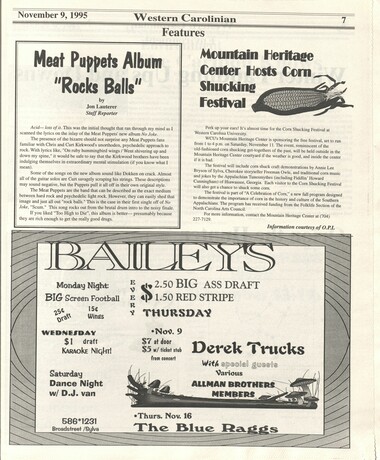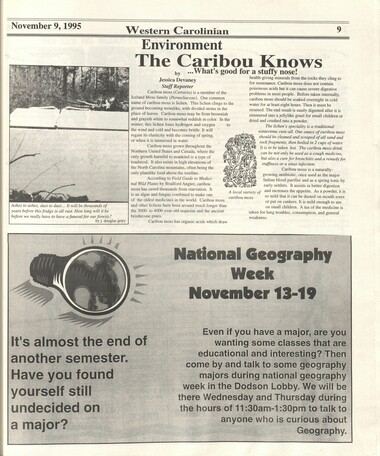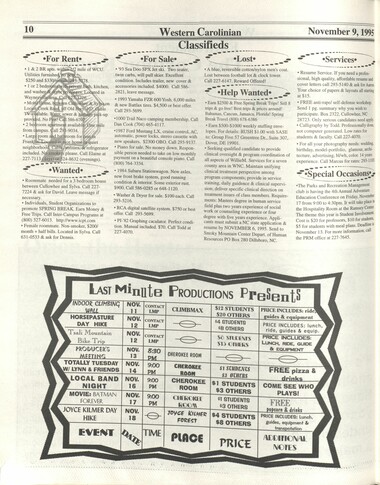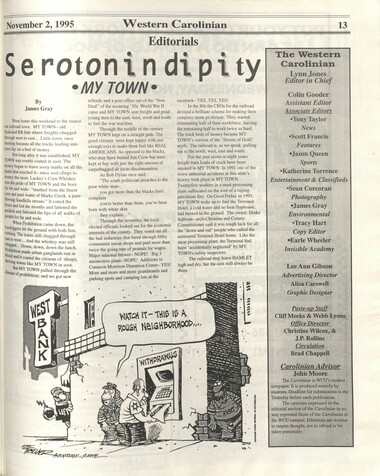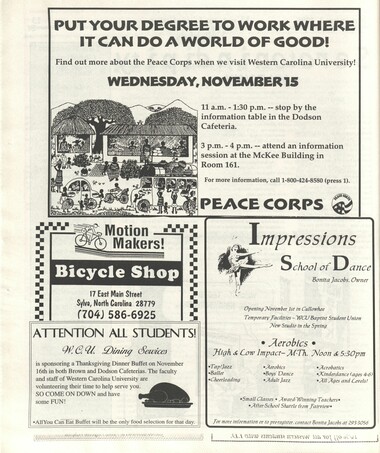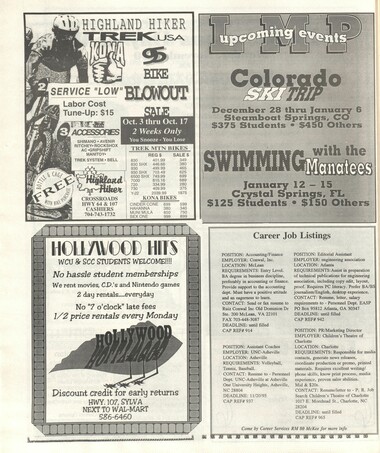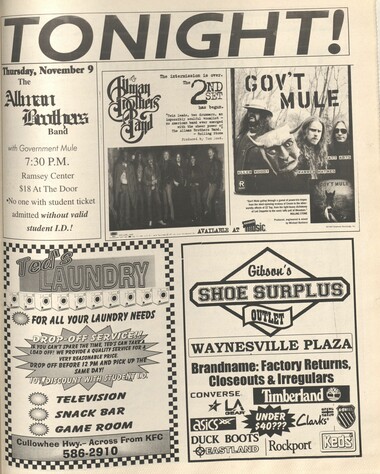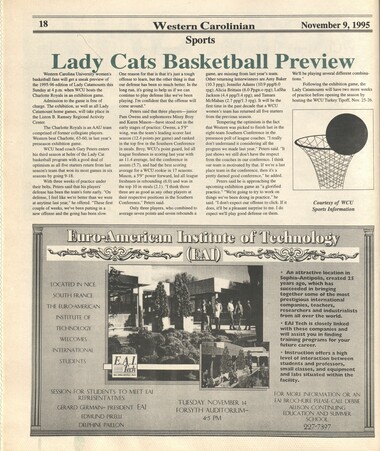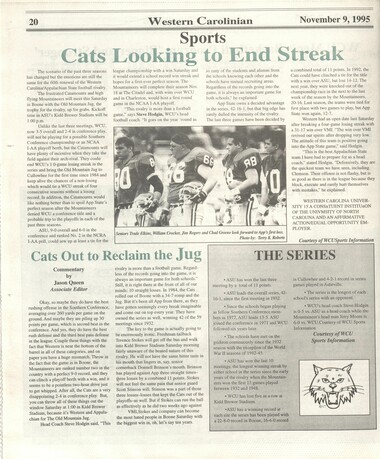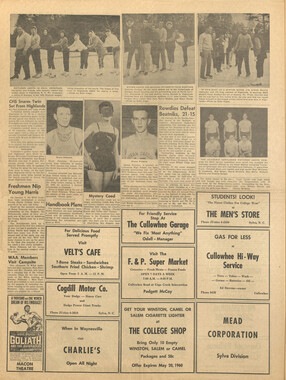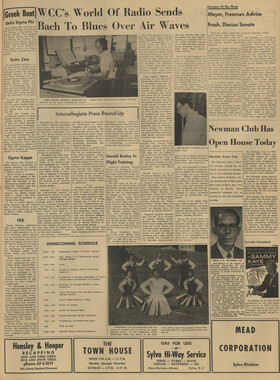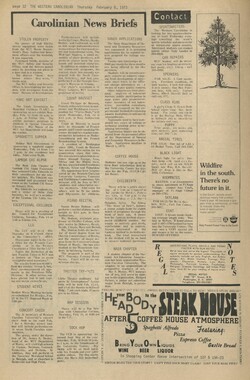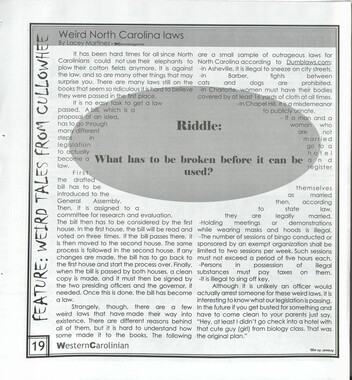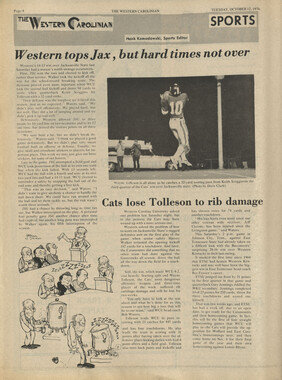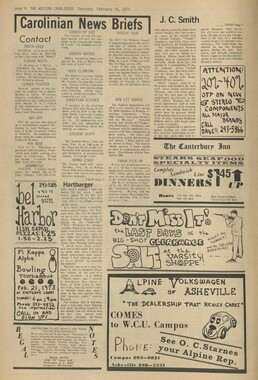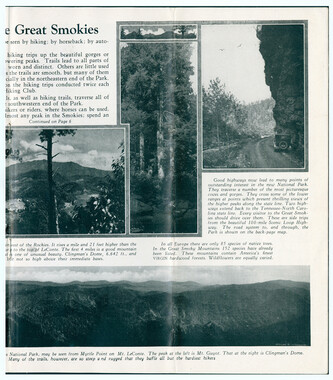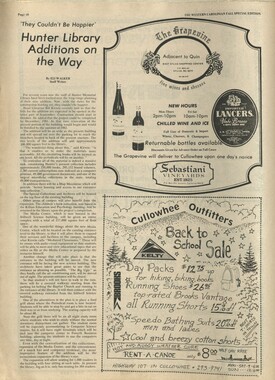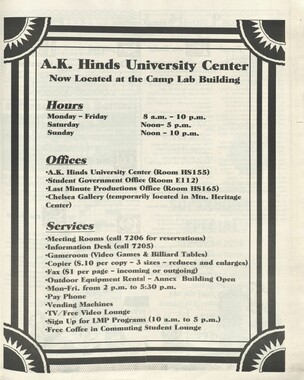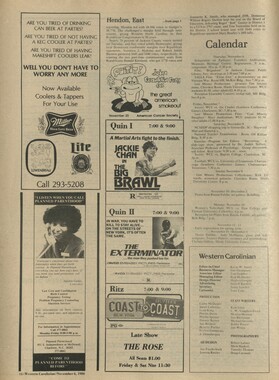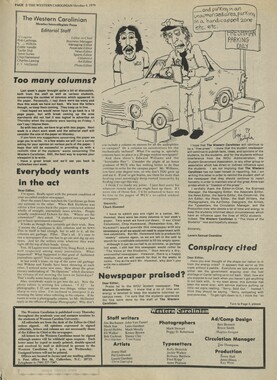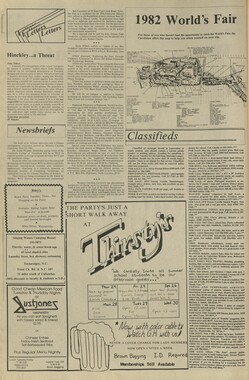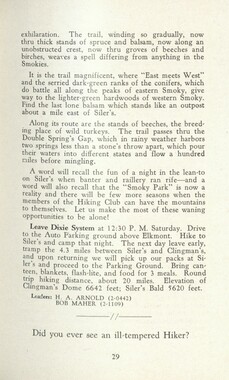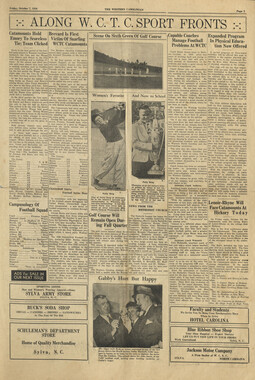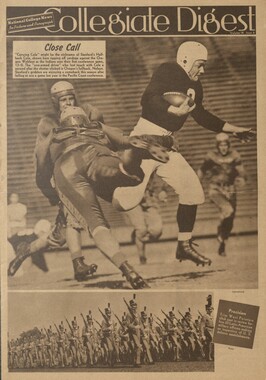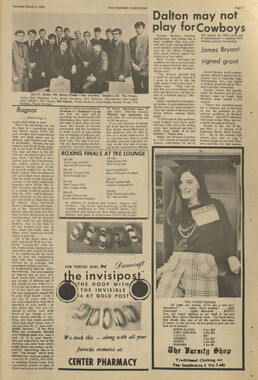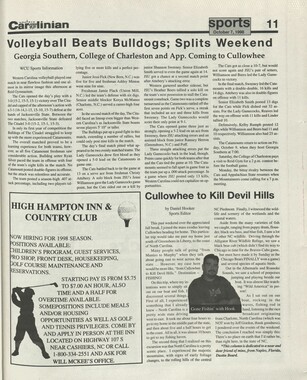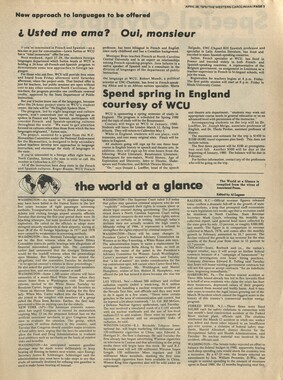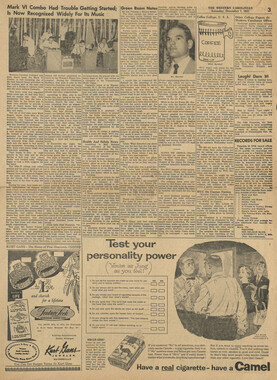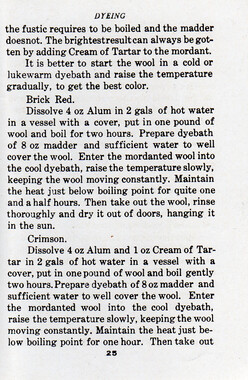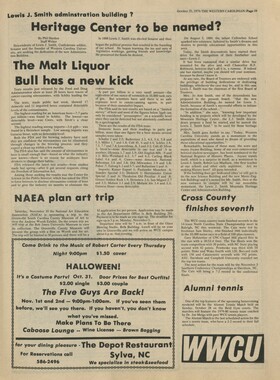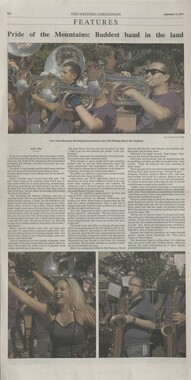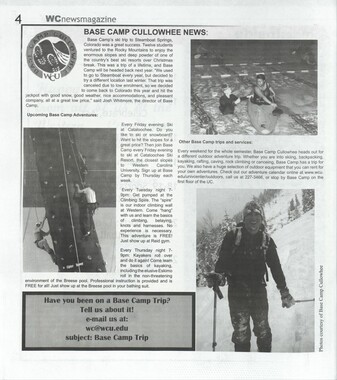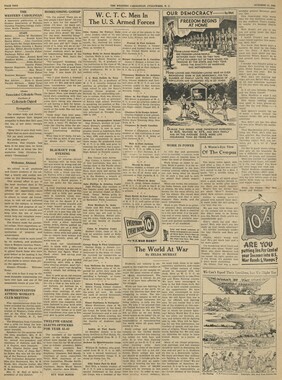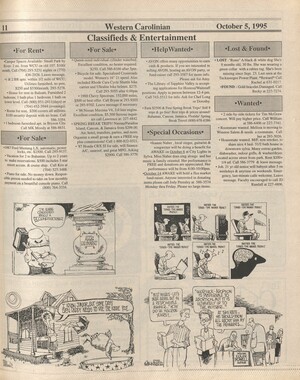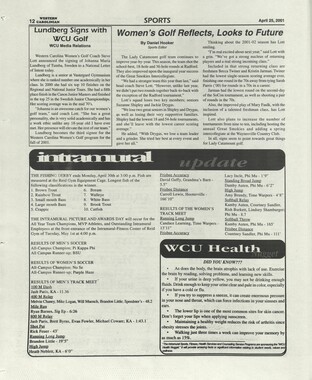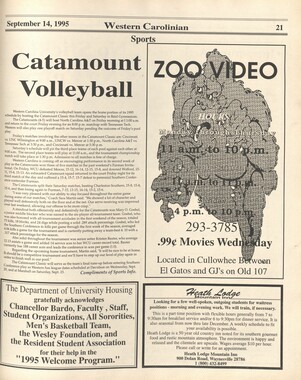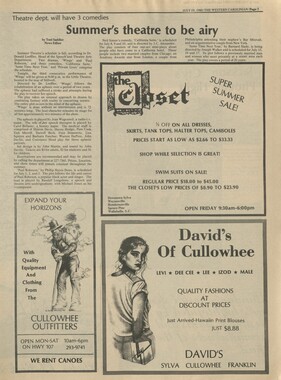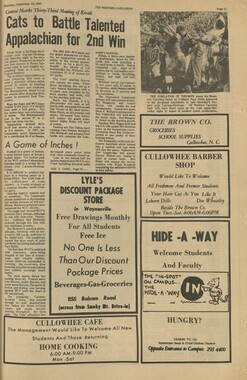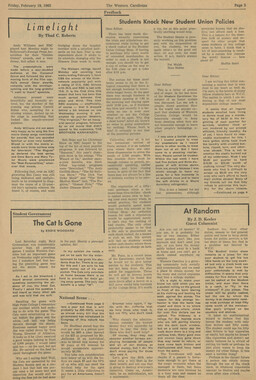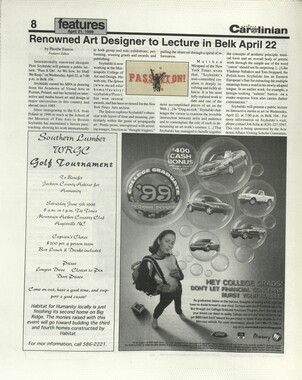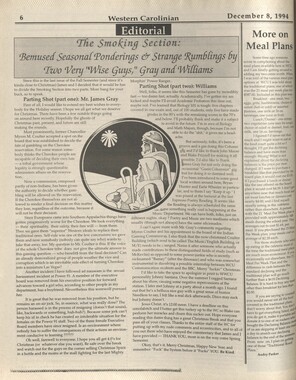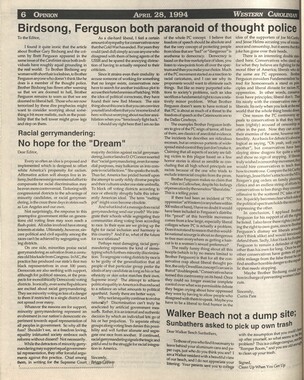Western Carolina University (21)
View all
- Canton Champion Fibre Company (2308)
- Cherokee Traditions (291)
- Civil War in Southern Appalachia (165)
- Craft Revival (1942)
- George Masa Collection (137)
- Great Smoky Mountains - A Park for America (3080)
- Highlights from Western Carolina University (422)
- Horace Kephart (998)
- Journeys Through Jackson (159)
- LGBTQIA+ Archive of Jackson County (89)
- Oral Histories of Western North Carolina (318)
- Picturing Appalachia (6617)
- Stories of Mountain Folk (413)
- Travel Western North Carolina (153)
- Western Carolina University Fine Art Museum Vitreograph Collection (129)
- Western Carolina University Herbarium (92)
- Western Carolina University: Making Memories (738)
- Western Carolina University Publications (2491)
- Western Carolina University Restricted Electronic Theses and Dissertations (146)
- Western North Carolina Regional Maps (71)
- World War II in Southern Appalachia (131)
University of North Carolina Asheville (6)
View all
- Allanstand Cottage Industries (62)
- Appalachian National Park Association (53)
- Bennett, Kelly, 1890-1974 (1463)
- Berry, Walter (76)
- Brasstown Carvers (40)
- Carver, George Washington, 1864?-1943 (26)
- Cathey, Joseph, 1803-1874 (1)
- Champion Fibre Company (233)
- Champion Paper and Fibre Company (297)
- Cherokee Indian Fair Association (16)
- Cherokee Language Program (22)
- Crowe, Amanda (40)
- Edmonston, Thomas Benton, 1842-1907 (7)
- Ensley, A. L. (Abraham Lincoln), 1865-1948 (275)
- Fromer, Irving Rhodes, 1913-1994 (70)
- George Butz (BFS 1907) (46)
- Goodrich, Frances Louisa (120)
- Grant, George Alexander, 1891-1964 (96)
- Heard, Marian Gladys (60)
- Kephart, Calvin, 1883-1969 (15)
- Kephart, Horace, 1862-1931 (313)
- Kephart, Laura, 1862-1954 (91)
- Laney, Gideon Thomas, 1889-1976 (439)
- Masa, George, 1881-1933 (61)
- McElhinney, William Julian, 1896-1953 (44)
- Niggli, Josephina, 1910-1983 (10)
- North Carolina Park Commission (105)
- Osborne, Kezia Stradley (9)
- Owens, Samuel Robert, 1918-1995 (11)
- Penland Weavers and Potters (36)
- Roberts, Vivienne (15)
- Roth, Albert, 1890-1974 (142)
- Schenck, Carl Alwin, 1868-1955 (1)
- Sherrill's Photography Studio (2565)
- Southern Highland Handicraft Guild (127)
- Southern Highlanders, Inc. (71)
- Stalcup, Jesse Bryson (46)
- Stearns, I. K. (213)
- Thompson, James Edward, 1880-1976 (226)
- United States. Indian Arts and Crafts Board (130)
- USFS (683)
- Vance, Zebulon Baird, 1830-1894 (1)
- Weaver, Zebulon, 1872-1948 (58)
- Western Carolina College (230)
- Western Carolina Teachers College (282)
- Western Carolina University (2008)
- Western Carolina University. Mountain Heritage Center (18)
- Whitman, Walt, 1819-1892 (10)
- Wilburn, Hiram Coleman, 1880-1967 (73)
- Williams, Isadora (3)
- Cain, Doreyl Ammons (0)
- Crittenden, Lorraine (0)
- Rhodes, Judy (0)
- Smith, Edward Clark (0)
- Appalachian Region, Southern (3032)
- Asheville (N.C.) (1945)
- Avery County (N.C.) (26)
- Blount County (Tenn.) (195)
- Buncombe County (N.C.) (1680)
- Cherokee County (N.C.) (283)
- Clay County (N.C.) (556)
- Graham County (N.C.) (238)
- Great Smoky Mountains National Park (N.C. and Tenn.) (535)
- Haywood County (N.C.) (3573)
- Henderson County (N.C.) (70)
- Jackson County (N.C.) (4925)
- Knox County (Tenn.) (35)
- Knoxville (Tenn.) (13)
- Lake Santeetlah (N.C.) (10)
- Macon County (N.C.) (421)
- Madison County (N.C.) (216)
- McDowell County (N.C.) (39)
- Mitchell County (N.C.) (135)
- Polk County (N.C.) (35)
- Qualla Boundary (982)
- Rutherford County (N.C.) (78)
- Swain County (N.C.) (2185)
- Transylvania County (N.C.) (270)
- Watauga County (N.C.) (12)
- Waynesville (N.C.) (86)
- Yancey County (N.C.) (72)
- Aerial Photographs (3)
- Aerial Views (60)
- Albums (books) (4)
- Articles (1)
- Artifacts (object Genre) (228)
- Bibliographies (1)
- Biography (general Genre) (2)
- Cards (information Artifacts) (38)
- Clippings (information Artifacts) (193)
- Copybooks (instructional Materials) (3)
- Crafts (art Genres) (622)
- Depictions (visual Works) (21)
- Design Drawings (1)
- Digital Moving Image Formats (2)
- Drawings (visual Works) (185)
- Envelopes (115)
- Exhibitions (events) (1)
- Facsimiles (reproductions) (1)
- Fiction (general Genre) (4)
- Financial Records (12)
- Fliers (printed Matter) (67)
- Glass Plate Negatives (381)
- Guidebooks (2)
- Internegatives (10)
- Interviews (823)
- Land Surveys (102)
- Letters (correspondence) (1070)
- Manuscripts (documents) (618)
- Maps (documents) (177)
- Memorandums (25)
- Minutes (administrative Records) (59)
- Negatives (photographs) (6090)
- Newsletters (1290)
- Newspapers (2)
- Notebooks (8)
- Occupation Currency (1)
- Paintings (visual Works) (1)
- Pen And Ink Drawings (1)
- Periodicals (194)
- Personal Narratives (10)
- Photographs (12977)
- Plans (maps) (1)
- Poetry (6)
- Portraits (4568)
- Postcards (329)
- Programs (documents) (181)
- Publications (documents) (2444)
- Questionnaires (65)
- Relief Prints (26)
- Sayings (literary Genre) (1)
- Scrapbooks (282)
- Sheet Music (2)
- Slides (photographs) (402)
- Songs (musical Compositions) (2)
- Sound Recordings (802)
- Specimens (92)
- Speeches (documents) (18)
- Tintypes (photographs) (8)
- Transcripts (329)
- Text Messages (0)
- A.L. Ensley Collection (275)
- Appalachian Industrial School Records (7)
- Appalachian National Park Association Records (336)
- Axley-Meroney Collection (2)
- Bayard Wootten Photograph Collection (20)
- Bethel Rural Community Organization Collection (7)
- Blumer Collection (5)
- C.W. Slagle Collection (20)
- Canton Area Historical Museum (2110)
- Carlos C. Campbell Collection (462)
- Cataloochee History Project (64)
- Cherokee Studies Collection (4)
- Daisy Dame Photograph Album (5)
- Daniel Boone VI Collection (1)
- Doris Ulmann Photograph Collection (112)
- Elizabeth H. Lasley Collection (1)
- Elizabeth Woolworth Szold Fleharty Collection (4)
- Frank Fry Collection (95)
- George Masa Collection (173)
- Gideon Laney Collection (452)
- Hazel Scarborough Collection (2)
- Hiram C. Wilburn Papers (28)
- Historic Photographs Collection (236)
- Horace Kephart Collection (861)
- Humbard Collection (33)
- Hunter and Weaver Families Collection (1)
- I. D. Blumenthal Collection (4)
- Isadora Williams Collection (4)
- Jesse Bryson Stalcup Collection (47)
- Jim Thompson Collection (224)
- John B. Battle Collection (7)
- John C. Campbell Folk School Records (80)
- John Parris Collection (6)
- Judaculla Rock project (2)
- Kelly Bennett Collection (1482)
- Love Family Papers (11)
- Major Wiley Parris Civil War Letters (3)
- Map Collection (12)
- McFee-Misemer Civil War Letters (34)
- Mountain Heritage Center Collection (4)
- Norburn - Robertson - Thomson Families Collection (44)
- Pauline Hood Collection (7)
- Pre-Guild Collection (2)
- Qualla Arts and Crafts Mutual Collection (12)
- R.A. Romanes Collection (681)
- Rosser H. Taylor Collection (1)
- Samuel Robert Owens Collection (94)
- Sara Madison Collection (144)
- Sherrill Studio Photo Collection (2558)
- Smoky Mountains Hiking Club Collection (616)
- Stories of Mountain Folk - Radio Programs (374)
- The Reporter, Western Carolina University (510)
- Venoy and Elizabeth Reed Collection (16)
- WCU Gender and Sexuality Oral History Project (36)
- WCU Mountain Heritage Center Oral Histories (25)
- WCU Oral History Collection - Mountain People, Mountain Lives (71)
- WCU Students Newspapers Collection (1923)
- Western North Carolina Tomorrow Black Oral History Project (69)
- William Williams Stringfield Collection (2)
- Zebulon Weaver Collection (109)
- African Americans (390)
- Appalachian Trail (35)
- Artisans (521)
- Cherokee art (84)
- Cherokee artists -- North Carolina (10)
- Cherokee language (21)
- Cherokee pottery (101)
- Cherokee women (208)
- Church buildings (190)
- Civilian Conservation Corps (U.S.) (111)
- College student newspapers and periodicals (2012)
- Dams (108)
- Dance (1023)
- Education (222)
- Floods (63)
- Folk music (1015)
- Forced removal, 1813-1903 (2)
- Forest conservation (220)
- Forests and forestry (1198)
- Gender nonconformity (4)
- Great Smoky Mountains National Park (N.C. and Tenn.) (181)
- Hunting (47)
- Landscape photography (25)
- Logging (122)
- Maps (83)
- Mines and mineral resources (9)
- North Carolina -- Maps (18)
- Paper industry (38)
- Postcards (255)
- Pottery (135)
- Railroad trains (72)
- Rural electrification -- North Carolina, Western (3)
- School integration -- Southern States (2)
- Segregation -- North Carolina, Western (5)
- Slavery (5)
- Sports (452)
- Storytelling (243)
- Waterfalls -- Great Smoky Mountains (N.C. and Tenn.) (66)
- Weaving -- Appalachian Region, Southern (280)
- Wood-carving -- Appalachian Region, Southern (328)
- World War, 1939-1945 (174)
Western Carolinian Volume 61 Number 09 (11)
Item
Item’s are ‘child’ level descriptions to ‘parent’ objects, (e.g. one page of a whole book).
-
-
8 Western Carolinian November 9,1995 Environment Winter Paddling Ups and Downs by Bryan Hunter StaffReporter For many paddlers, winter marks the end of white water fun until springtime rolls around again. Kayaks and canoes are put in the garage to gather cobwebs and gear is thrown in the bottom of the closet. All that is left are memories of the past year's trips to curb the withdrawal. This does not have to be the case. If you have the appropriate gear and right mindset, you need not spend another winter waiting for warm weather. The greatest advantage to winter paddling is the lack of traffic on the rivers. You will find yourself, too many times to count, alone on the river to enjoy its beauty without the hustle and bustle of summertime. Animals also take advantage of the privacy and venture to the river banks in greater numbers. Winter paddling also involves an increase in danger inherent to cold weather, so there are some common sense guidelines you should follow to ensure your safety. The biggest concern in cold weather is hypothermia, which occurs when your body temperature drops below functioning levels and begins to shut down. This can be deadly. The logical thing to do is wear warm clothes and layer them. A vapor barrier on the outside is also essential. Take caution in the warm clothes you select because many materials can actually make you colder. Cotton is bad! Among experienced outdoors people it is known as "death cloth" because it allows water to stay close to your skin and therefore suck the heat right out of you. The best materials to wear are the synthetic ones like polar fleece or thermal underwear. These materials wick water away from your skin and dry quickly. Wool also works very well at keeping your body dry, but you will probably find that it is too bulky and doesn't allow for the range of movement you need. Make sure you put Orion the Hunter by Cray Sheedy StaffReporter According to legend, Orion the great hunter is in the sky because he claimed superiority over all the other creatures of the Earth. Because of his statement the gods got mad and sent a scorpion to attack him. The scorpion succeeded in stinging Orion on his foot and the painful sting led to his death. When Orion died, he was sent to the heavens to create a beautiful constellation. Opposite of Orion lies the scorpion. They were intentionally placed across from each other so that the scorpion would cause Orion no further harm. Contained within this constellation is a great nebula. It is located in Orion's sword. A nebula is a gigantic mass of gas, whirlpooling in an unstable agitation. Betel- geuse is probably the most interesting star in Orion. This star was the first to have its diameter measured. The diameter is assumed to be about 460 million miles. The star is believed to be about 2900 times as bright as our own sun. Orion is unique because it contains many bright stars. No other constellation is made up so many brilliant stars. Orion is also unique because the celestial equator passes through the constellation. on as many layers as needed to keep you warm. Now that you have the insulating layers on, it is time for something to keep the water out. A drysuit is the best thing to have. Made out of waterproof material with rubber gaskets at the neck, wrists and ankles, it will keep you totally dry, even if you arc submerged. The drawback to a drysuit is its price: a good one will run you about two hundred smackers. An alternative to the full drysuit is the dry top. It is the same concept as a drysuit but it only covers the upper body. As long as you don't come out of your boat, you will stay just as dry in one of these. They arc about half the price of the full suit. Be sure to take the same precautions when covering your head and feet, because you lose most of your body temperature through these two areas of the body. Wear a wool cap and neoprene socks to keep toasty. Some people like to wear gloves as well; others find that they get in the way. It's a personal choice. It is also important to bring along extra clothes in a dry bag in case someone gets hypothermia. Dressing for cold weather is only a portion of your concern. You must keep in mind that are going to get cold, so plan your trips on rivers you know well and make runs that are not very long. If you get in a nasty situation the cold weather will magnify the danger twofold, so it is smart to take a Orion appears low on the southern horizon. It can be viewed if you face geographic south and look low on the southwestern horizon. conservative approach to even the easiest rapids. It always seems that no matter how well you dress up, someone gets cold. Pay extra special attention to the people in your group and watch for signs of hypothermia. The first stage is just being cold. This is OK as long as you take measures to get warm. Next comes the shivering stage, still OK, but when you stop shivering and become numb, you have hypothermia. If someone begins to drop things, talk with a slur or stumble or exhibit other incoherent behavior, you must act fast. The person who is developing hypothermia probably won't recognize their problem. When they get to the stage where they stop shivering, they don't think they are cold anymore, so you must force them to listen. The best thing to do for a hypothermic person is to get off all their wet clothes and replace them with dry ones. Next, give them a candy bar and warm liquids. If the case is extreme it is a good idea to build a fire and get the person moving around it. " is crucial to be able to recognize hypothermia in its earliest stages and treat it quickly, to avoid fatalities. . With the right gear and state of mind, you will find winter paddling to be much more enjoyable than the summertime swelter, so grab your boat and gear and hi the water. Itfs your right! Both of these U.S. Representatives are on the Committee on Resources and the Subcommittee on Energy and Mineral Resources. In addition, Representative Cremeans sits on the Subcommitee of Water and Power Resources. Neil Abercrombie (D-HI) 1233 LHOB Washington, DC 20515-1101 Phone #: 202-225-2726 Frank A. Cremeans (R-OH) 1107RHOB „_, Washington, DC 20515-3506 Phone #: 202-225-5705
Object
Object’s are ‘parent’ level descriptions to ‘children’ items, (e.g. a book with pages).
-
The Western Carolinian is Western Carolina University's student-run newspaper. The paper was published as the Cullowhee Yodel from 1924 to 1931 before changing its name to The Western Carolinian in 1933.
-
